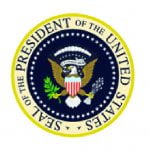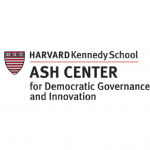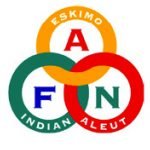Students in the Alaska Native Science and Engineering Program, known as ANSEP, recently gathered in downtown Anchorage to listen to the first enrolled member of a Native American tribe to fly in space.
But this time, John Herrington, a Chikasaw, had a different mission. The US Navy officer and former astronaut with the National Aeronautics and Space Administration (NASA) was invited to town to inspire young people in ANSEP to pursue their dreams.
ANSEP began as a scholarship program to aid one Indigenous student in pursuing a career in science, technology, engineering, and math (STEM) and has blossomed into a multi-program facility with thousands of Alaskan graduates.”
Herrington’s presentation turned into a celebration that celebrated recent graduates and sponsors. It also came with some news — that ANSEP was expanding to offer a business program.
ANSEP has a wide spectrum of programs that begin as early as kindergarten,
with sessions ranging from 45 minutes to several months. As early as middle school, students can take college classes.
Herrington was impressed at the crowd assembled for his speech.
“I walked in here and I was like ‘WOW, look at all the students here, my goodness,” he said, “and the age range is you know all the way from middle school to Ph.D.”

Herrington flew into space in 2002. Before his departure, he underwent a sage burning ceremony. He also brought several cultural items onboard.
Herrington’s time in space has had a meaningful impact on the Chickasaw Nation in Oklahoma and other tribal communities across the country. As he’s traveled to talk about his adventures as an astronaut, he’s also had new experiences.
He remembers in 2013 when he opened a century chest from 1913 and read a letter from William Malcolm Guy.
“I found out that William Malcolm Guy was a governor of my tribe back at the turn of the century. And in it, he said, ‘I hope the people one hundred years hence are in full enjoyment of those things I wanted most for my people and it was; education and advancement in society,'” he said.
The impact was immense, says Herrington.
“I’m like, I’m the first guy reading this,” he said. “I’m a Chickasaw citizen reading a letter from my governor, way back in the day.”
Also inside the chest were several tribal artifacts, including the Chickasaw Nation flag and constitution and a poster of an Oklahoma celebration, which was Indigenous territory at the time.
When Herrington finished speaking, the students traced his footprints in the center of the room to represent a golden circle. They will be laminated and added to a collection of footprints of other motivational speakers, a reminder of the power of passion and all the possibilities it creates.
“I like to think that the decisions that my ancestors have made that allowed me to do what I have done is I have to honor their – essentially their sacrifice that I have been able to accomplish the type of things,” said Herrington, who hopes someone else in his tribe or any other tribe can do the same things.
Matt Calhoun is the interim president of the ANSEP program. He spoke about his experiences as an alumnae student and the importance of the celebration speaker.

“For the students to see someone like them and be inspired on what they could potentially do,” he said, “an inspirational message to the students so they can hopefully realize that they can be accomplished.”
Calhoun took over after Herb Schroeder, who started ANSEP more than 20 years ago, went on administrative leave in 2023.
Graduates and sponsors were recognized at the event for their contributions to the programs and were gifted with giant strips of baleen, an ANSEP tradition.
Baleen comes from baleen whales and is made out of keratin, the same material as human fingernails.
Baleen is a resource that is only harvestable by Indigenous people. ANSEP’s baleen comes from Wainwright and other surrounding villages by the artist, Anthony Henry.
Calhoun says that before the ANSEP program, the amount of Alaska Native people who graduated with a STEM degree from a school like the University of Alaska Anchorage could be counted on two hands.
The success of the program has been evident, says Calhoun. “And since ANSEP has originated and grown to what it is today, that number is nearly a thousand graduates.”
—————————-
Read the original story here on KNBA.



